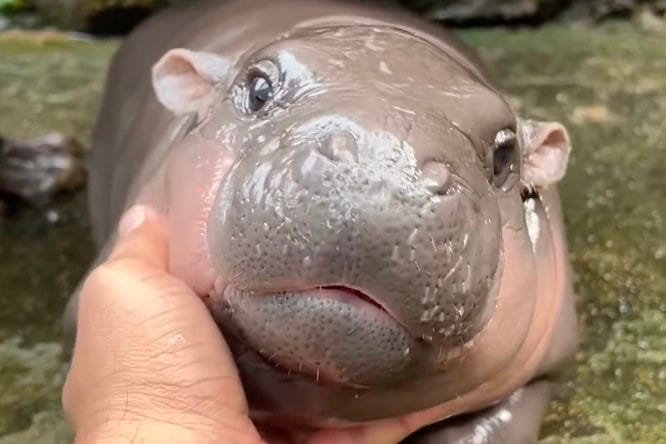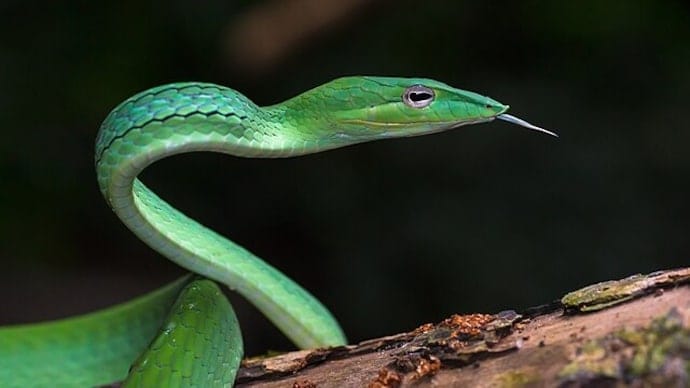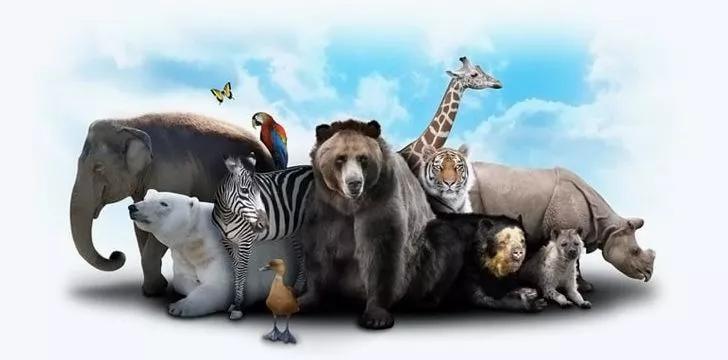Top 10 Animals That Kill the Most Humans Annually

The Unlikely Killers: Top 10 Deadliest Animals to Humans
When we think of deadly animals, we often picture fierce predators like sharks, lions, and tigers. However, the reality is that some of the most lethal creatures are often overlooked, and may even be lurking in our own backyards. Here are the top 10 deadliest animals to humans, based on the number of annual fatalities.
- Mosquitoes: 700,000 deaths annuallyMosquitoes may be small, but they are responsible for the most human deaths every year. These tiny insects transmit diseases like malaria, dengue fever, and yellow fever, which together claim hundreds of thousands of lives annually.
- Snakes: 100,000 fatalities every yearSnakes are a close second on the list, with venomous species like cobras, vipers, and rattlesnakes causing significant harm. While many species are harmless, some can deliver deadly venom with a single bite.
- Ascaris roundworms: 60,000 deaths annuallyThese parasitic worms may not be as well-known as some other entries on the list, but they are responsible for a significant number of deaths, particularly in tropical regions. They can cause intestinal blockages, malnutrition, and even death.
- Dogs: 25,000 fatalities every yearWhile dogs are often considered man's best friend, they can also be deadly. Rabid dogs, in particular, pose a significant threat, transmitting the disease through bites and scratches.
- Freshwater snails: 20,000 deaths annuallyFreshwater snails may seem harmless, but they can carry a parasitic disease called schistosomiasis, which can cause liver and bladder damage, and even death.
These animals may not be as fearsome as some of the more well-known predators, but they are certainly deadly. It's essential to be aware of the risks they pose and take necessary precautions to protect ourselves and our loved ones.
The Tiny Terrors: Mosquitoes and Their Deadly Diseases
Mosquitoes are one of the deadliest creatures on the planet, and their impact is felt across the globe. These tiny insects may be small, but they pack a big punch when it comes to spreading diseases and claiming human lives.
Deadly Diseases Spread by Mosquitoes
Mosquitoes are vectors for some of the most devastating diseases known to humans. They spread:
- Malaria: a disease that affects over 200 million people worldwide each year, causing symptoms like fever, chills, and flu-like illness.
- Dengue fever: a viral disease that affects over 390 million people worldwide each year, causing severe flu-like symptoms and potentially life-threatening complications.
- Zika virus: a viral disease linked to birth defects and neurological disorders, which has caused widespread outbreaks in recent years.
The Devastating Toll of Mosquito Bites
The consequences of mosquito bites are staggering. According to the World Health Organization (WHO), mosquito bites cause:
- Over 1 million deaths worldwide each year, making them one of the deadliest animals on the planet.
- Millions more cases of illness, suffering, and economic hardship.
It's crucial to recognize the threat posed by mosquitoes and take measures to prevent their bites, such as using insecticides, wearing protective clothing, and eliminating standing water around homes and communities.
Slithering Dangers: Snakes and Their Venomous Bites
Snakes are one of the most feared creatures in the animal kingdom, and for good reason. These slithering dangers are responsible for a significant number of human deaths every year. According to recent estimates, snakes kill over 50,000 people annually, with the majority of these deaths occurring in rural areas.
The venomous species of snakes, such as cobras, vipers, and rattlesnakes, are the primary culprits behind these fatalities. Their venom is a complex mixture of toxins that can cause a range of systemic and local effects, including pain, swelling, bleeding, and respiratory failure. If left untreated, a venomous snake bite can be deadly.
The reasons behind the high number of snakebite-related deaths are multifaceted. In rural areas, access to medical care is often limited, making it difficult for victims to receive timely treatment. Additionally, many people in these areas are unaware of the proper first aid measures to take in the event of a snake bite, leading to further complications.
Moreover, the geographic distribution of venomous snakes overlaps with some of the most populated regions of the world, increasing the likelihood of encounters between humans and snakes. For example, the Indian cobra, one of the most venomous snakes in the world, is found in the Indian subcontinent, where over 1.3 billion people reside.
Efforts are being made to mitigate the impact of snakebites, including the development of more effective antivenoms and public awareness campaigns. However, more needs to be done to address this significant public health concern.
The Hidden Killers: Ascaris Roundworms and Freshwater Snails
When we think of deadly animals, we often imagine ferocious beasts with sharp teeth and claws. However, some of the most significant threats to human life come from unexpected and seemingly harmless creatures. Ascaris roundworms and freshwater snails are two examples of such hidden killers, responsible for a substantial number of deaths annually.
Ascaris Roundworms: Silent Killers of Children
Ascaris roundworms are parasitic nematodes that infect the human gut, causing ascariasis. These worms are most commonly found in tropical and subtropical regions, where poor sanitation and hygiene facilitate their transmission. According to the World Health Organization (WHO), Ascaris roundworms cause approximately 60,000 deaths annually, with the majority of these fatalities occurring in children under the age of 10.
The worms' impact on children's health is particularly devastating, as they can lead to malnutrition, stunted growth, and impaired cognitive development. In severe cases, intestinal blockages caused by the worms can be fatal if left untreated.
Freshwater Snails: Stealthy Transmitters of Disease
Freshwater snails are another overlooked threat to human life. These snails act as intermediate hosts for the parasite Schistosoma, which causes schistosomiasis, a disease that affects over 240 million people worldwide. Annually, freshwater snails transmit diseases that lead to approximately 12,000 deaths, mostly in tropical and subtropical regions.
Schistosomiasis can cause a range of symptoms, including abdominal pain, diarrhea, and fatigue. If left untreated, the disease can lead to more severe complications, such as liver and kidney damage, and even death.
In conclusion, Ascaris roundworms and freshwater snails may not be as intimidating as other deadly animals, but their impact on human life should not be underestimated. It is essential to raise awareness about these hidden killers and implement effective prevention and treatment strategies to mitigate their devastating effects.
Man's Best Friend? Dogs and Rabies-Related Deaths
When we think of dogs, we often think of loyalty, companionship, and unconditional love. However, it's crucial to acknowledge the darker side of our canine companions. Dogs are responsible for a staggering 59,000 human deaths annually, mostly due to rabies. This staggering number makes dogs one of the top animals responsible for human deaths worldwide.
Rabies is a preventable disease, yet it still claims thousands of lives every year. The virus attacks the central nervous system, causing inflammation in the brain and eventually leading to death. The majority of these deaths occur in developing countries where access to healthcare and vaccinations is limited.
The irony is that dogs are often considered man's best friend, but they can also be a deadly enemy when infected with rabies. It's essential to raise awareness about the importance of vaccination and animal control to prevent these unnecessary deaths.
By understanding the risks associated with dogs and rabies, we can take steps to mitigate them and ensure that our furry friends don't become a fatal threat. Remember, prevention is key, and together we can make a difference.
The Rest of the List: Kissing Bugs, Scorpions, and Tapeworms
While snakes, hippopotamuses, and crocodiles are often the most feared animals when it comes to deadly encounters, there are other creatures that deserve attention for their surprising impact on human mortality rates. Here are a few examples:
Kissing Bugs: Silent Killers
Kissing bugs, also known as triatomine bugs, may seem harmless, but they transmit Chagas disease, a potentially life-threatening condition. According to the World Health Organization (WHO), Chagas disease causes approximately 10,000 deaths annually, mainly in Latin America. The bugs get their name from their habit of biting humans on the face, often near the mouth or eyes.
Scorpions: Venomous Stingers
Scorpions are another animal that makes the list, with an estimated 3,000 fatalities each year. While most scorpion stings are not deadly, certain species like the deathstalker scorpion and the Arabian fat-tailed scorpion possess venom that can be highly toxic to humans.
Tapeworms: Parasitic Killers
Tapeworms, specifically the Taenia solium tapeworm, are responsible for approximately 1,000 deaths annually. These parasitic worms can infect humans through contaminated food and water, leading to a condition called cysticercosis. If left untreated, cysticercosis can cause seizures, hydrocephalus, and even death.
These creatures may not be as well-known for their deadly encounters, but they still pose a significant threat to human life. It's essential to be aware of their presence and take necessary precautions to avoid their habitats and prevent their bites or infections.
Conclusion: Respecting the Wild and Preventing Deaths
As we've explored the top 10 animals that kill the most humans annually, it's clear that understanding the dangers posed by these animals can help prevent deaths. By acknowledging the risks and taking necessary precautions, we can significantly reduce the number of fatalities. In this conclusion, we'll summarize the importance of respecting wildlife and highlight crucial measures to prevent deaths.
Understanding the Dangers
Recognizing the hazards associated with these animals is the first step in preventing encounters gone wrong. By educating ourselves on their habitats, behaviors, and attack patterns, we can take informed measures to avoid conflicts. This knowledge enables us to:
- Be aware of our surroundings when venturing into wild areas
- Avoid provoking or approaching animals in the wild
- Take necessary precautions when interacting with animals in controlled environments
Respecting Wildlife and Taking Precautions
Respecting wildlife means acknowledging their space and power. By taking precautions, we can minimize the risk of fatal encounters. Some essential measures include:
- Following safety guidelines and instructions from experts or guides
- Wearing protective clothing and gear when necessary
- Staying in groups and avoiding solo excursions in high-risk areas
- Supporting conservation efforts to protect both humans and animals
By embracing a culture of respect and caution, we can coexist with wildlife and reduce the number of deadly encounters. Remember, prevention is key, and knowledge is power.







/https://static.texastribune.org/media/images/AmericanBlackBear.jpg)










Comments ()